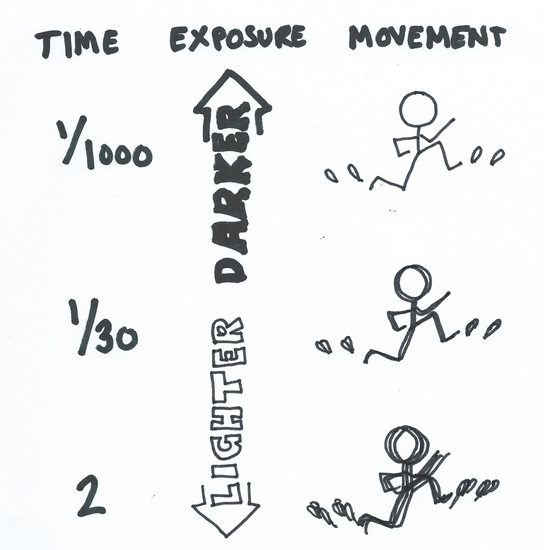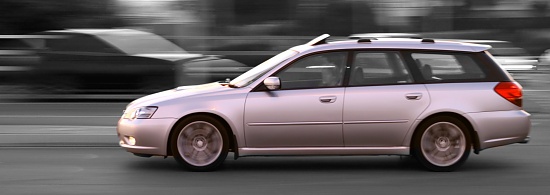Is there something moving in your picture? If so, you need to understand shutter speed and what it can do for you!
Adjusting the speed of your shutter (and therefore the length of exposure) allows you to determine how much movement there is in your shot.
You can either capture a small slice of time with a fast shutter speed to ‘freeze’ an image; or expose your film/sensor for longer to capture a longer moment that will include movement, resulting in a blurred image.
The two extremes are: a super- fast shutter speed for capturing the detail in a water crown versus a super-slow shutter speed for capturing the movement in a light trail. The payoff in either situation will be the amount of light let in while the shutter is open.
Fast shutter = shorter time open = less light let in = risk of under exposure
Slow shutter = longer time open = more light let in = risk of over exposure

Using aperture to overcome shutter speeds
Shutter speed and aperture are linked, and it is possible to adjust one instead of the other to still be able to get the shot. The question is – what is more important? Exposure, movement or depth of field?
You want movement, but it is a sunny day and you do not want to over expose.
If you want movement, therefore a slower shutter speed, you might have to cut the amount of light coming in by adjusting your aperture. The higher the f-number the smaller the hole letting the light in. The payoff will be in the depth of field. The higher the f-number, the more of the area around your subject will be in focus. The result? Potentially crisp non-moving backgrounds with a ‘blurry’ subject.
You don’t want movement, but the light conditions are low and you do not want to under expose.
If you don’t want movement you want a fast shutter speed, but to avoid under exposure you might have to open your aperture wide. This means that less area around your subject will be in focus. The result? Crisp photos with dark or out of focus surroundings.
These values are inevitably affected by film speed as well as distance between you and the subject. For bright conditions opt for 200 ISO, and if you are planning to take pictures in the dark opt for 800+ ISO, bearing in mind that the higher the ISO, the more ‘grainy’ the image.
On a final note, any shutter speed of around 1/30 or longer will need a tripod to take a crisp shot!

